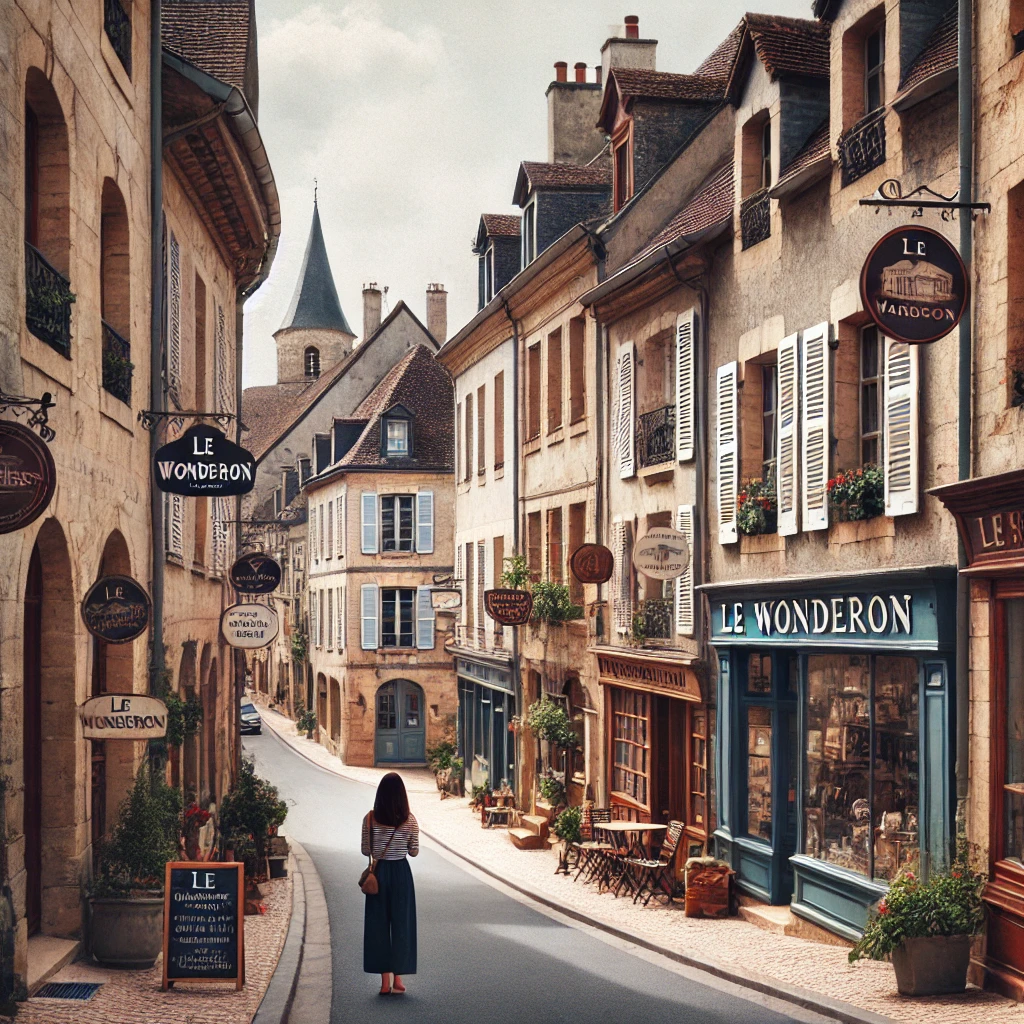ChatGPT:
Beaune, located in the heart of Burgundy, France, is renowned for its wine culture, historic architecture, and charming ambiance. As the wine capital of the Burgundy region, it serves as a hub for wine lovers, offering numerous vineyards and tasting experiences, particularly for its famous Pinot Noir and Chardonnay.
The town is encircled by medieval ramparts, and its most iconic landmark is the Hôtel-Dieu, a former charitable hospital with a stunning glazed-tile roof. Founded in the 15th century, this building now serves as a museum and showcases Burgundy’s rich history. Beaune’s cobbled streets are lined with boutiques, cafés, and gourmet restaurants, where visitors can enjoy regional delicacies like boeuf bourguignon and escargots.
Beaune also hosts the annual Hospices de Beaune Wine Auction, one of the most prestigious charity wine auctions globally. The town’s relaxed pace, scenic vineyards, and deep-rooted cultural traditions make it a must-visit for those exploring French wine and heritage.
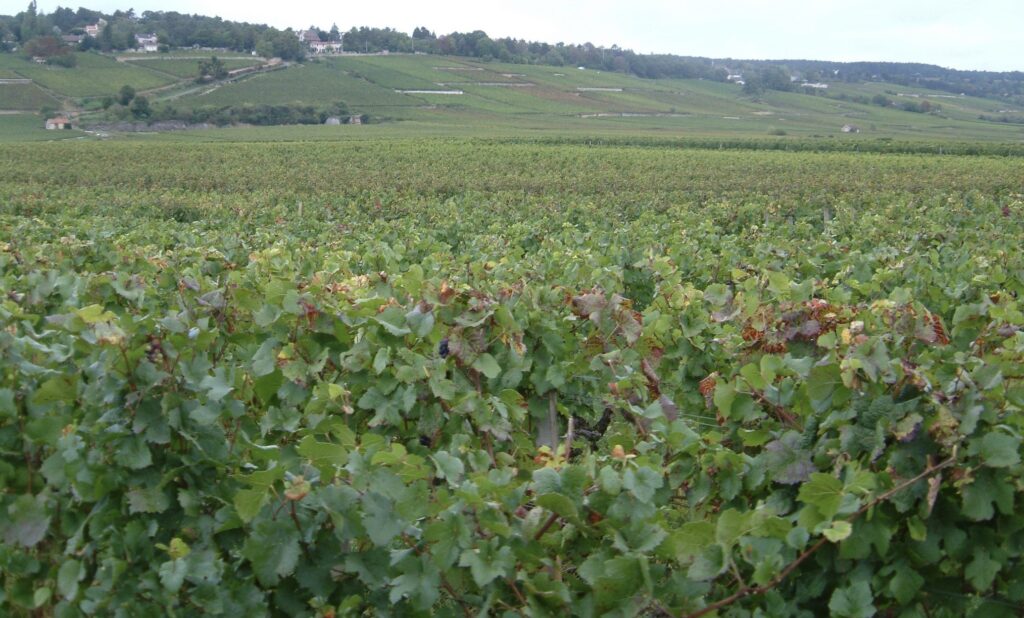
Beaune has a rich history that dates back over 2,000 years, with its origins rooted in ancient times. The area around Beaune was first settled during the Roman era, and evidence suggests that viticulture (wine production) began as early as the 1st century AD. The town’s strategic location in Burgundy made it an important stop along the Roman roads, which connected key cities across the country.
Medieval Growth and Influence
In the early Middle Ages, Beaune developed as a fortified settlement. It became a key center for the Duchy of Burgundy, which grew into one of the most powerful territories in medieval Europe. During the 13th and 14th centuries, Beaune was one of the favored residences of the Dukes of Burgundy, particularly due to its role as a hub for wine production and trade. The construction of the town’s walls and ramparts around this period fortified it against attacks and emphasized its strategic importance.
One of Beaune’s most significant contributions to history is the foundation of the Hôtel-Dieu in 1443 by Nicolas Rolin, Chancellor to Duke Philip the Good. The Hôtel-Dieu was established as a charitable hospital to care for the poor and remains a symbol of Burgundy’s medieval wealth and philanthropy. This stunning Gothic building, with its iconic patterned tile roof, is a central feature of Beaune’s historic identity.
The Renaissance and Wine Culture
The Renaissance period saw continued growth in Beaune, driven by its position at the heart of the Burgundy wine region. The wine trade flourished, and Beaune’s vintners gained prestige throughout Europe. The development of wine production techniques and the classification of vineyards into climats (plots with distinct characteristics) further solidified Beaune’s reputation as a premier wine-producing region.
Modern Era and the Wine Industry
In the 19th and early 20th centuries, Beaune experienced both challenges and growth. The Phylloxera epidemic in the late 1800s devastated vineyards across France, including those in Beaune. However, the region quickly recovered through replanting and revitalization efforts. Beaune’s wine auction at the Hospices de Beaune, established in the 19th century, became one of the most prestigious events in the wine world, attracting buyers from around the globe.
During the 20th century, Beaune’s wine industry continued to modernize while retaining traditional methods, making it a vital part of France’s cultural and economic identity. Tourism grew alongside the wine trade, with visitors drawn to Beaune’s historic architecture, cultural festivals, and vineyards. Today, Beaune is recognized not only for its wines but also as a symbol of French heritage, attracting both wine enthusiasts and those interested in its deep historical roots.
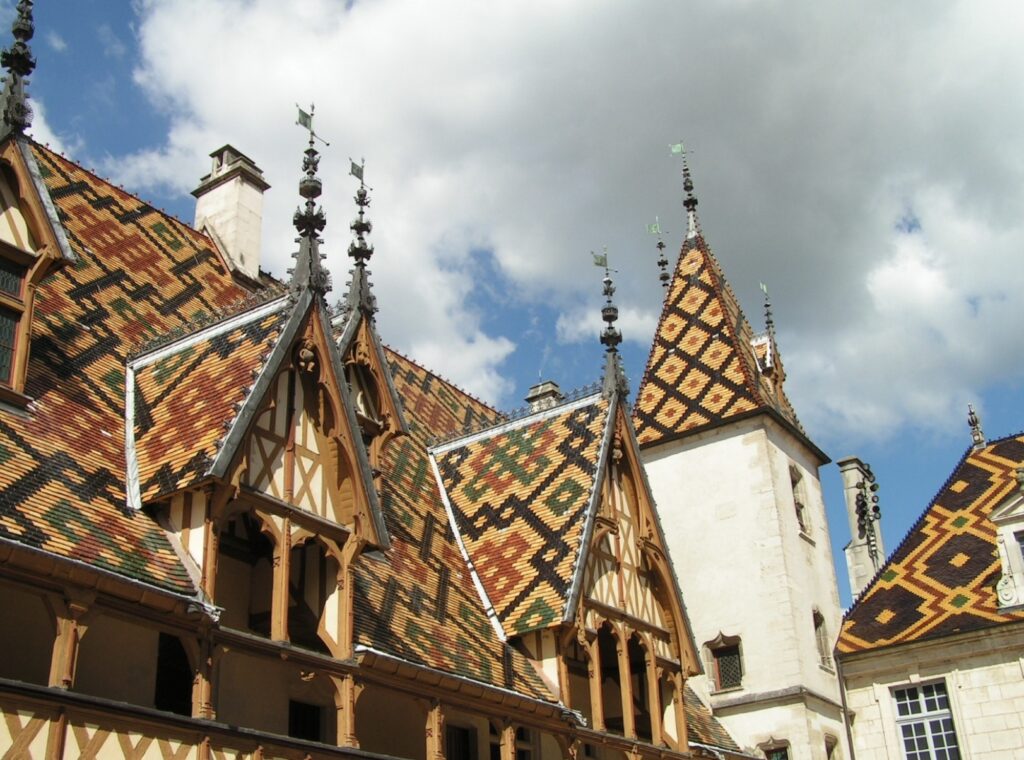
Beaune is rich in historical monuments and tourist attractions, many of which highlight the town’s deep connection to wine culture and its medieval heritage. Here are some key sites:
1. Hôtel-Dieu (Hospices de Beaune)
- The most iconic monument in Beaune, this 15th-century charitable hospital is known for its striking glazed-tile roof and Gothic architecture. Inside, it houses a museum with period furnishings, medical instruments, and notable art pieces, including The Last Judgment polyptych by Rogier van der Weyden. The annual Hospices de Beaune wine auction is held here.
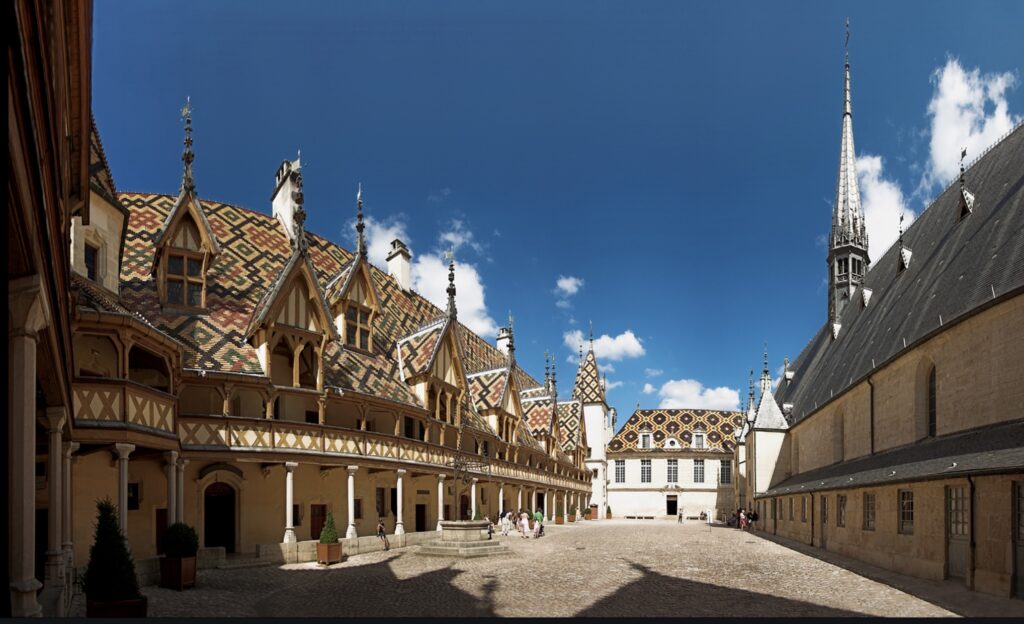
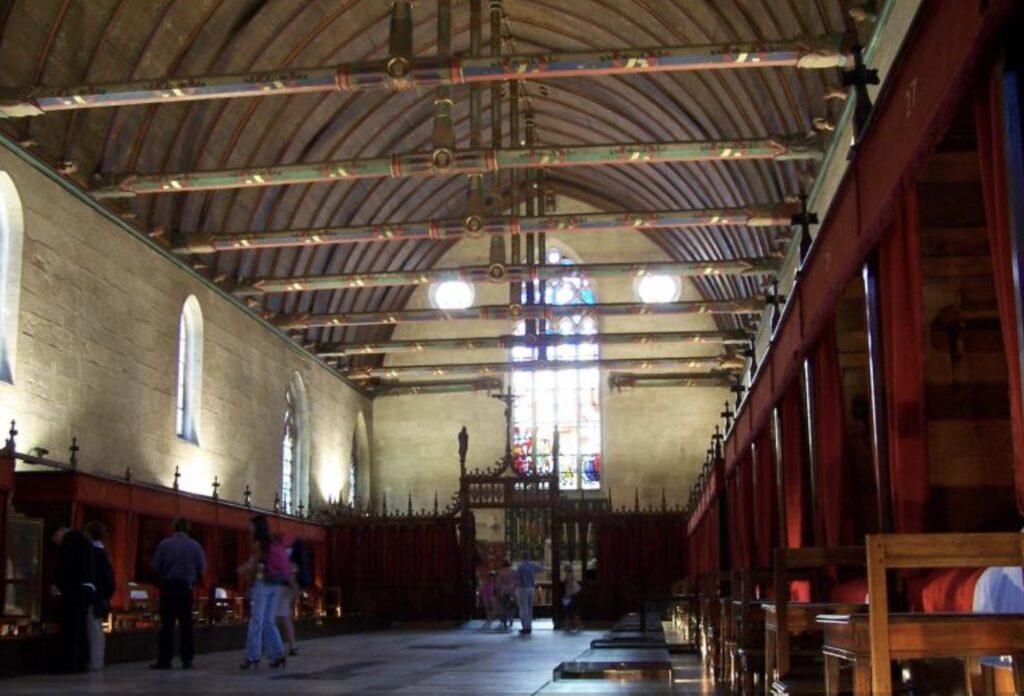
2. Basilique Notre-Dame de Beaune
- This Romanesque church, dating back to the 12th century, is one of the town’s most important religious landmarks. The basilica contains beautiful 15th-century tapestries depicting the life of the Virgin Mary, as well as Gothic and Renaissance elements added in later centuries.
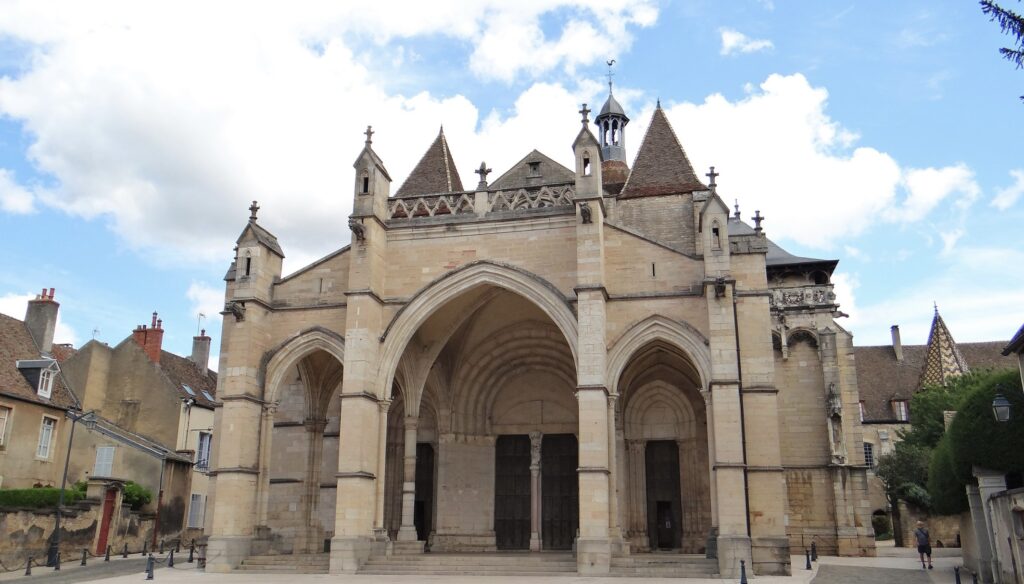
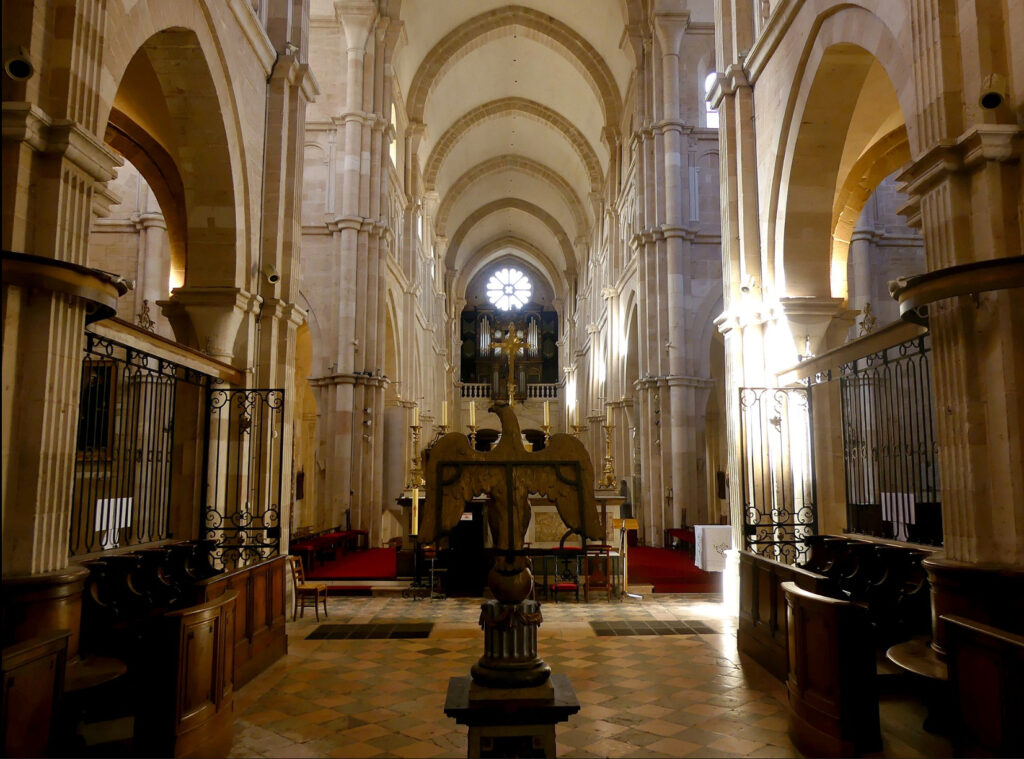
3. Musée du Vin de Bourgogne (Museum of Burgundy Wine)
- Located in the former palace of the Dukes of Burgundy, this museum tells the story of the region’s wine history and viticulture. Exhibits include wine-making tools, historical artifacts, and an extensive overview of Burgundy’s renowned vineyards.
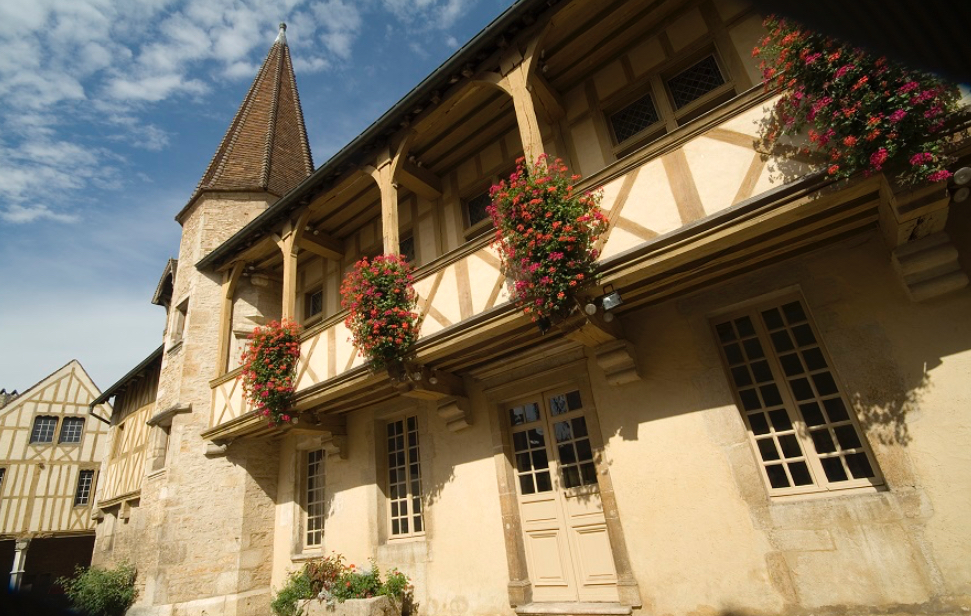
4. Château de Beaune
- A 15th-century fortress, the Château de Beaune now serves as the headquarters of Bouchard Père & Fils, one of Burgundy’s oldest wine merchants. While not fully open to the public, guided tours can explore the cellars beneath the château, which hold some of the world’s oldest wine collections.
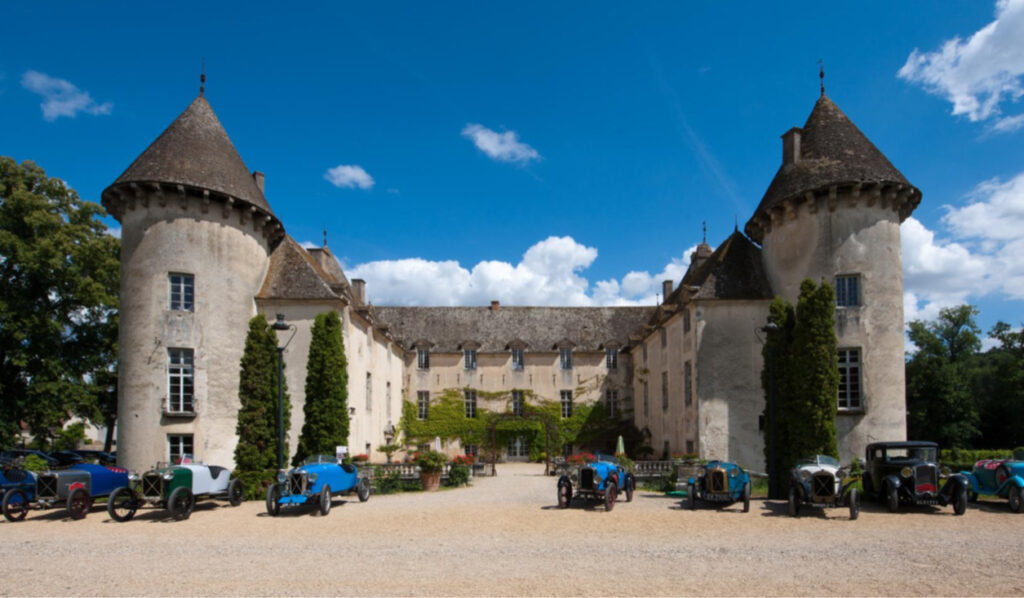
5. Remparts (Town Ramparts)
- The medieval walls surrounding Beaune offer a glimpse into its past as a fortified town. Visitors can walk along sections of the ramparts, where towers and gates still stand, providing views of the town and its surroundings.
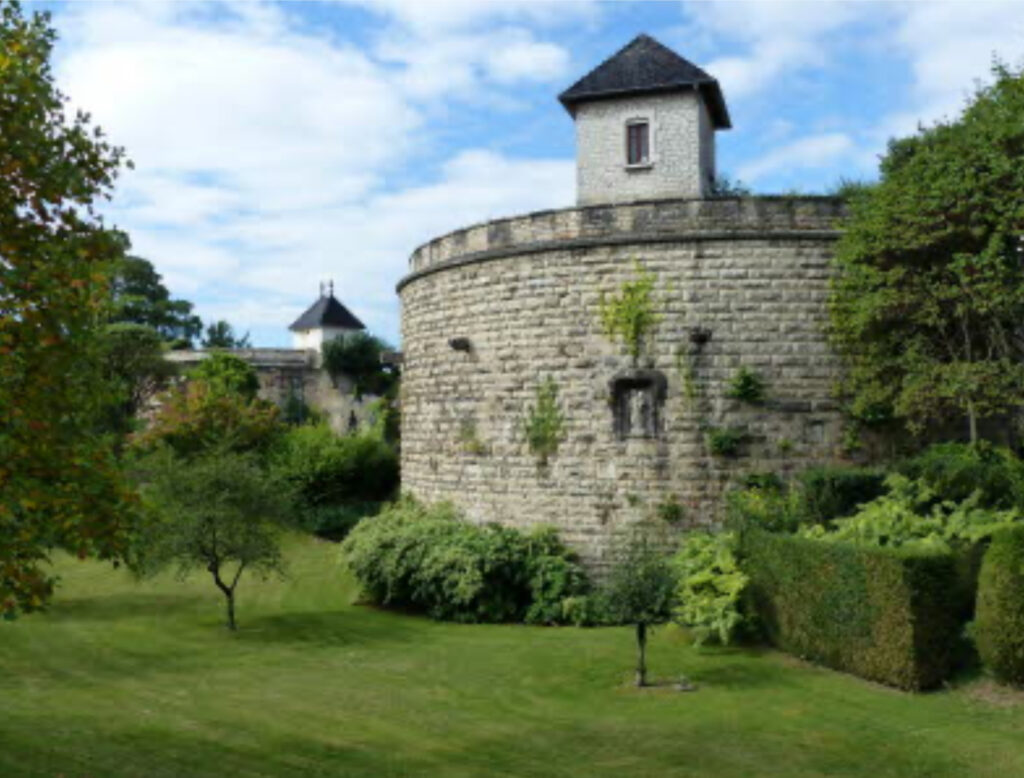
6. Patriarche Wine Cellars
- These vast cellars are among the largest in Burgundy, stretching over five kilometers. Visitors can explore the underground tunnels, learn about the history of wine-making in the region, and participate in tastings of local wines.
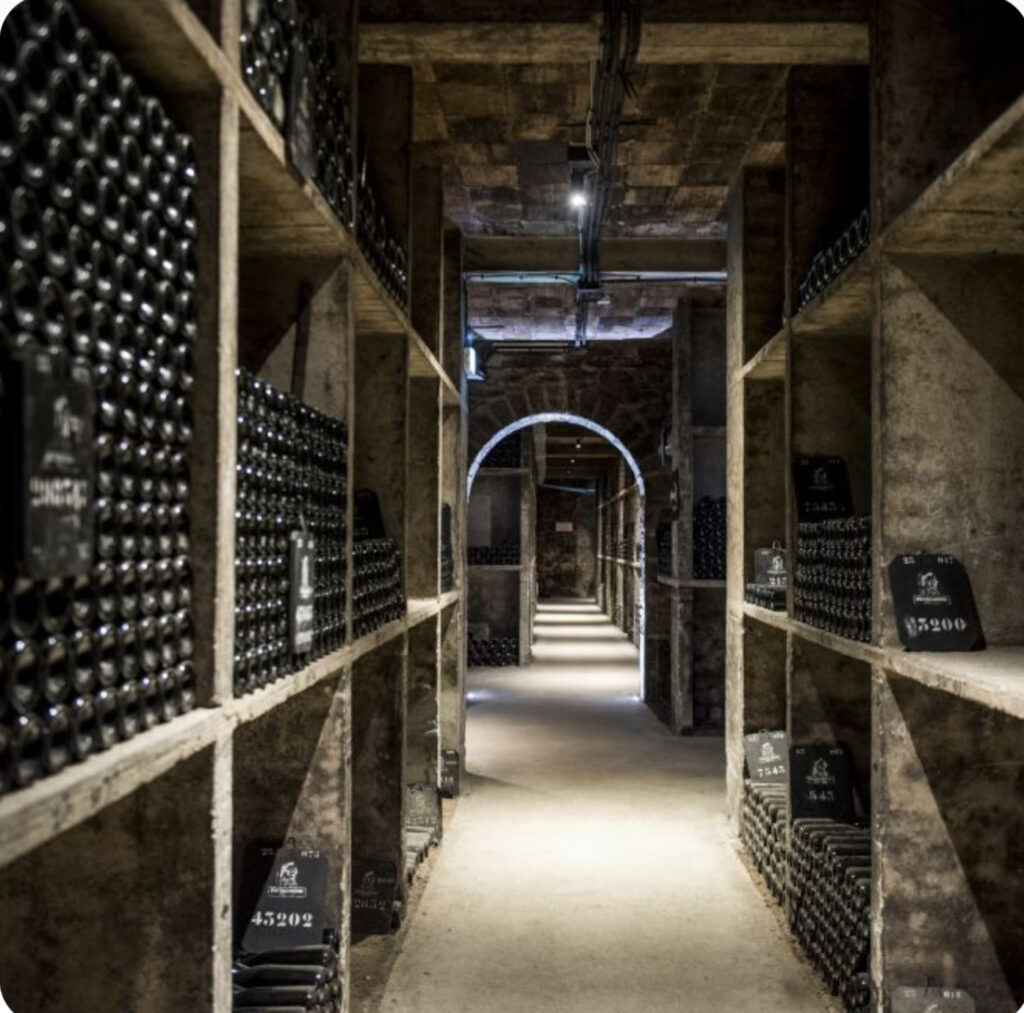
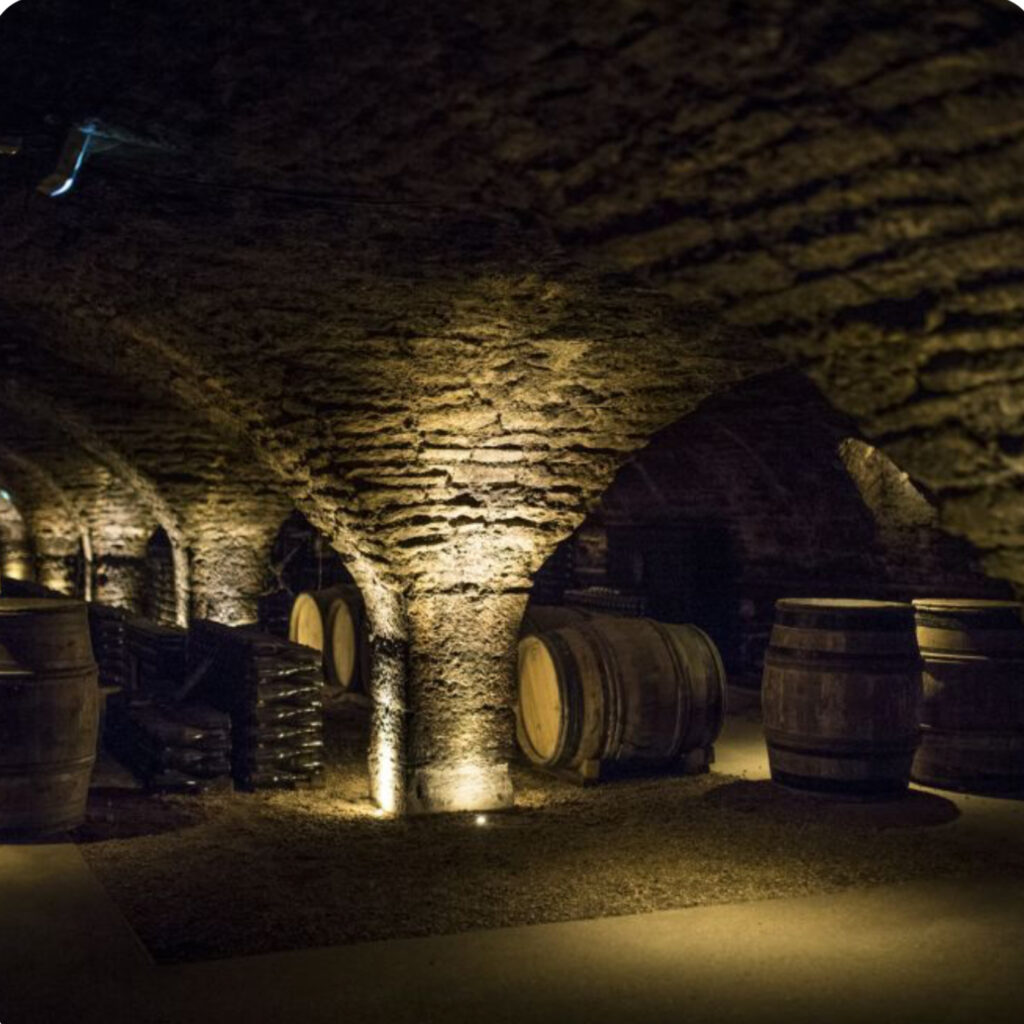
7. Musée des Beaux-Arts de Beaune (Fine Arts Museum)
- This museum features an impressive collection of artworks ranging from ancient to contemporary, with a particular focus on Burgundy’s artistic heritage. The museum also displays sculptures, decorative arts, and temporary exhibitions.
8. Place Carnot
- The central square of Beaune, Place Carnot, is a lively area surrounded by shops, cafés, and restaurants. It hosts a weekly market where local produce, cheeses, and wines are sold, making it a great spot to experience the local food scene.
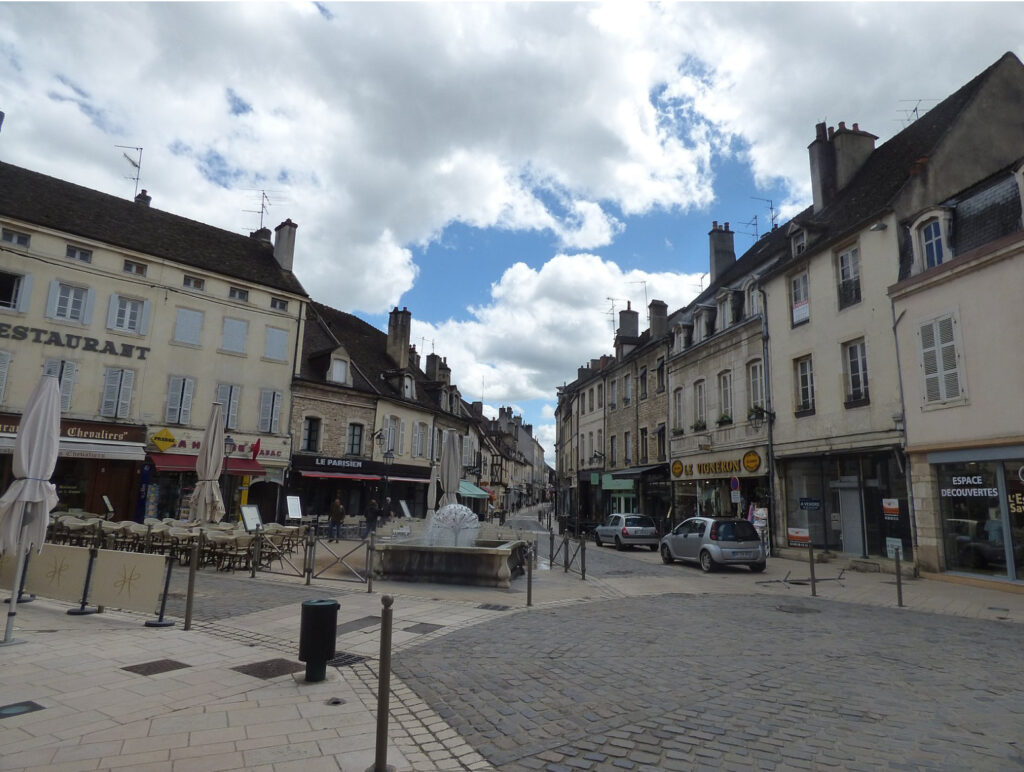
9. Fallot Mustard Mill (La Moutarderie Fallot)
- A unique attraction in Beaune, the Fallot Mustard Mill is one of the last traditional mustard producers in Burgundy. Visitors can tour the mill to see how mustard is made using traditional methods and taste various mustard varieties.
10. Côte de Beaune Vineyards
- Just outside of the town, these world-renowned vineyards are part of the Burgundy wine region. Visitors can explore famous appellations such as Pommard, Volnay, and Meursault, either through guided tours or by visiting local wine estates for tastings.
11. Château de Pommard
- A short drive from Beaune, this château is a grand estate known for its wines and art collection. Visitors can enjoy guided tours, wine tastings, and strolls through the château’s vineyards and gardens.
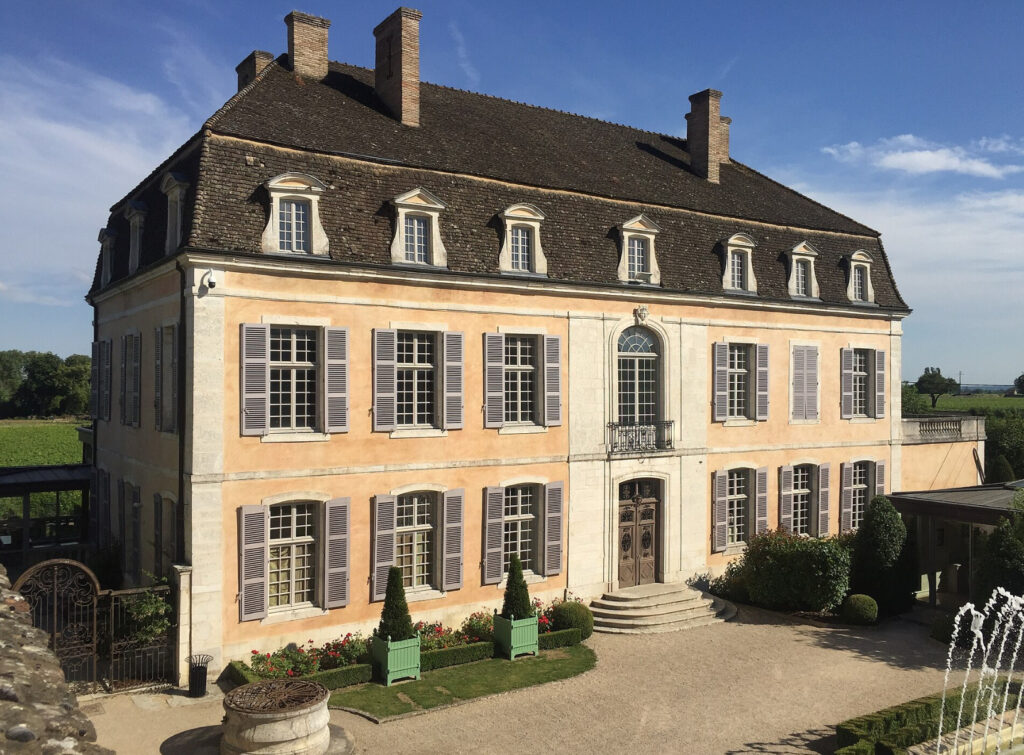
12. Parc de la Bouzaize
- This picturesque park is located on the edge of Beaune and offers a peaceful place to relax. The park includes a lake, walking paths, and beautiful green spaces, making it ideal for a leisurely afternoon.
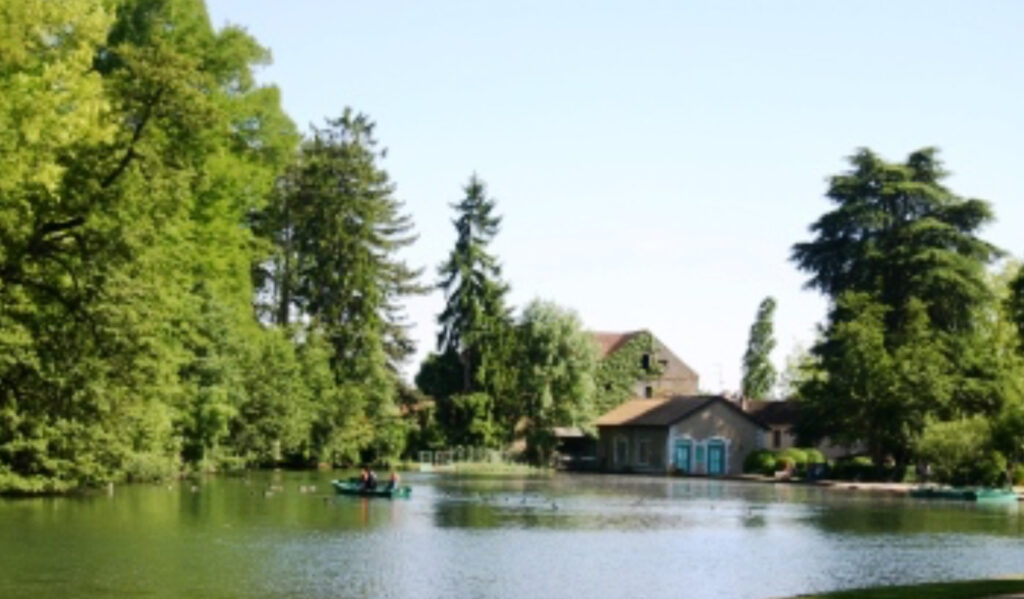
Beaune’s mix of wine culture, medieval history, and scenic landscapes makes it a popular destination for both wine enthusiasts and those interested in exploring French heritage.
The Hospices de Beaune Wine Auction, officially known as Vente des Vins des Hospices de Beaune, is the world’s oldest and most prestigious charity wine auction, held annually on the third Sunday of November in Beaune, Burgundy. The event is organized to raise funds for the Hôtel-Dieu (Hospices de Beaune), a former charitable hospital founded in 1443, and its associated charities. Here’s how the auction works:
1. Wine Donations and Production
The Hospices de Beaune owns over 60 hectares (about 148 acres) of prime vineyards, mostly classified as Premier Cru and Grand Cru, in the Côte de Beaune and Côte de Nuits wine regions. These vineyards were gradually donated over centuries by wealthy benefactors, including members of the nobility and local winegrowers. The wines auctioned each year come exclusively from these vineyards and are produced under the name of the Hospices.
Each vintage is made by the estate’s winemaking team, and the wines are sold in pièces—the traditional Burgundy wine barrel that holds about 228 liters (approximately 288 bottles).
2. The Auction Process
The auction is typically conducted by Christie’s, one of the world’s most renowned auction houses, and is open to both professionals (wine merchants, collectors) and private buyers. Traditionally, buyers bid on wine by the barrel, though some smaller lots or individual bottles have been auctioned in recent years to accommodate wider participation.
- Wine Tasting: Before the auction, prospective buyers have the chance to taste the wines of the current vintage. Several tastings are organized in the days leading up to the auction, allowing bidders to evaluate the quality of the wines they wish to purchase.
- The Sale: The auction itself is held in Beaune’s Hôtel-Dieu, often in its grand hall. Bidders place their bids either in person, online, or through proxies. The atmosphere is highly festive, with the auction serving as a major social and cultural event in Beaune, drawing participants from around the world.
- Cuvées: The wines are grouped into cuvées, each named after a historical donor or benefactor. There are typically around 50-60 different cuvées, representing a variety of Burgundy appellations, and buyers bid on entire barrels of these wines.
- Charity Lots: One of the highlights of the auction is the sale of the Pièce des Présidents (President’s Barrel), a special charity barrel, the proceeds of which are given to various medical and social charities. The President’s Barrel is often a unique or particularly prized lot, and its sale usually generates significant attention and high bids.
3. What Happens After the Auction
After successfully bidding for a barrel, the buyer does not receive the wine immediately. The wine is still in its early stages of aging and will remain in the care of the Hospices de Beaune until it is ready to be bottled, usually after 12 to 18 months.
- Customization: Buyers have the option to choose the winemaker who will oversee the remaining aging process for their barrel, as well as the type of bottling (labels, packaging). The winemaker then supervises the final stages of the wine’s development, after which it is bottled and delivered to the buyer.
- Resale or Personal Use: Many buyers are wine merchants who resell the wine after it is bottled, often with a significant markup due to the prestigious nature of the auction. However, private buyers may purchase the wine for personal use or to cellar for future aging.
4. Funds Raised
All proceeds from the auction go toward funding the Hospices de Beaune’s charitable missions, including the maintenance of the Hôtel-Dieu, healthcare facilities, and medical research. In recent years, millions of euros have been raised annually, with a portion of the funds directed toward special causes, such as local hospitals or global humanitarian initiatives.
5. Public Celebrations and Events
The wine auction is part of a larger weekend festival in Beaune, known as the Trois Glorieuses, which includes wine tastings, dinners, and other wine-related events. The entire town of Beaune comes alive with visitors and participants, making it one of the most celebrated events in Burgundy.
In essence, the Hospices de Beaune Wine Auction is not only a major charitable event but also an important date in the wine calendar, attracting buyers, collectors, and wine enthusiasts from around the world. It serves as a showcase for Burgundy wines, particularly from the Hospices’ prestigious vineyards, and plays a crucial role in preserving the historic Hôtel-Dieu and supporting healthcare in the region.
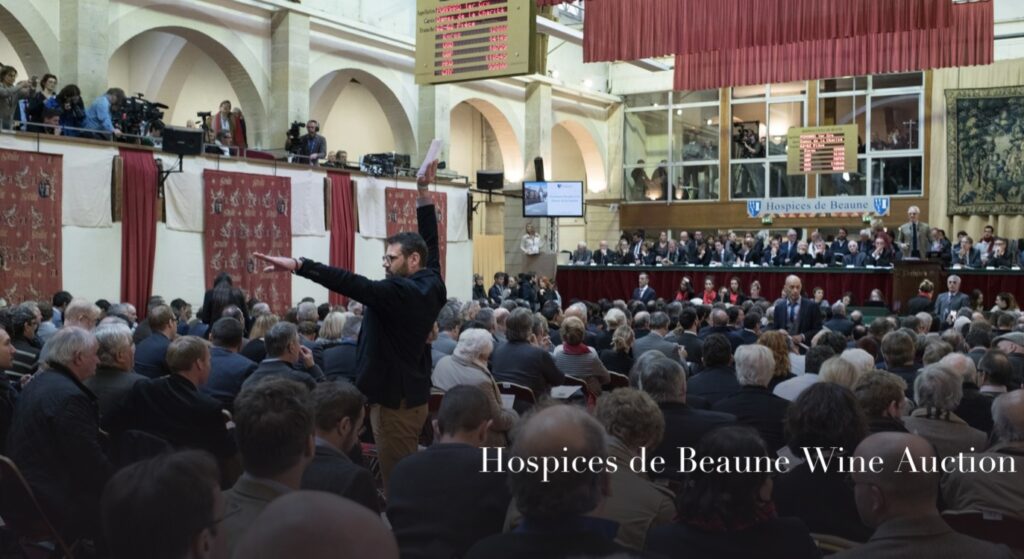
Here’s a one-day itinerary for visiting Beaune, incorporating its rich history and renowned local food scene:
Morning:
1. Hôtel-Dieu (Hospices de Beaune)
- Start your day with a visit to the Hôtel-Dieu, Beaune’s most famous historical site. Explore its Gothic architecture and museum, which houses art, medical instruments, and the famous The Last Judgment by Rogier van der Weyden.
- Time: 9:00 AM – 10:30 AM
2. Walk Along the Ramparts
- After your visit to the Hôtel-Dieu, take a stroll along Beaune’s medieval town ramparts. These walls offer a glimpse into the town’s fortified history and provide lovely views of Beaune’s narrow streets and old buildings.
- Time: 10:30 AM – 11:00 AM
3. Morning Coffee and Pastry at Maison Colin Seguin
- Enjoy a typical French breakfast at Maison Colin Seguin, a popular café in Beaune’s center. Try a freshly baked croissant or pain au chocolat, accompanied by a coffee or hot chocolate.
- Time: 11:00 AM – 11:30 AM
Late Morning:
4. Musée du Vin de Bourgogne (Museum of Burgundy Wine)
- Next, head to the Musée du Vin to delve into the history of Burgundy’s wine-making tradition. The museum offers insights into the viticulture methods that have made Beaune the wine capital of Burgundy.
- Time: 11:30 AM – 12:30 PM
Lunch:
5. Lunch at Ma Cuisine
- For lunch, dine at Ma Cuisine, a hidden gem in Beaune known for its excellent selection of local wines and authentic Burgundian cuisine. Indulge in dishes like boeuf bourguignon (beef stewed in red wine) or escargots (snails), paired with a local Pinot Noir or Chardonnay.
- Time: 12:30 PM – 2:00 PM
Afternoon:
6. Wine Tasting at Patriarche Wine Cellars
- Spend the afternoon exploring the Patriarche Wine Cellars, one of Beaune’s largest underground wine cellars. Wander through the vast labyrinth of tunnels, learn about Burgundy’s wine regions, and enjoy a tasting of some of the region’s best wines.
- Time: 2:15 PM – 3:30 PM
7. Explore Place Carnot and Afternoon Café Break
- After the wine tasting, walk to Place Carnot, the heart of Beaune. This square is lined with charming shops, cafés, and boutiques. Stop for a coffee or dessert at a local café, such as Les Mille et Une Feuilles, and enjoy some people-watching while relaxing.
- Time: 3:45 PM – 4:30 PM
Late Afternoon:
8. Visit Fallot Mustard Mill
- Learn about another of Beaune’s famous local products at the Fallot Mustard Mill. Take a guided tour to see how traditional mustard is made, and sample different varieties of this local specialty.
- Time: 4:45 PM – 5:30 PM
Dinner:
9. Dinner at Le Bénaton
- End your day with an elegant dinner at Le Bénaton, a Michelin-starred restaurant in Beaune. The menu focuses on seasonal ingredients and modern interpretations of Burgundian classics. Pair your meal with a fine local wine to complete your culinary journey through Beaune.
- Time: 7:00 PM – 9:00 PM
Optional Evening Stroll:
- After dinner, take a leisurely stroll through Beaune’s beautifully lit streets to enjoy the quiet atmosphere of the town in the evening.
This itinerary offers a perfect blend of Beaune’s rich history, wine culture, and its renowned food scene, making it an enjoyable day for both history buffs and food enthusiasts.
